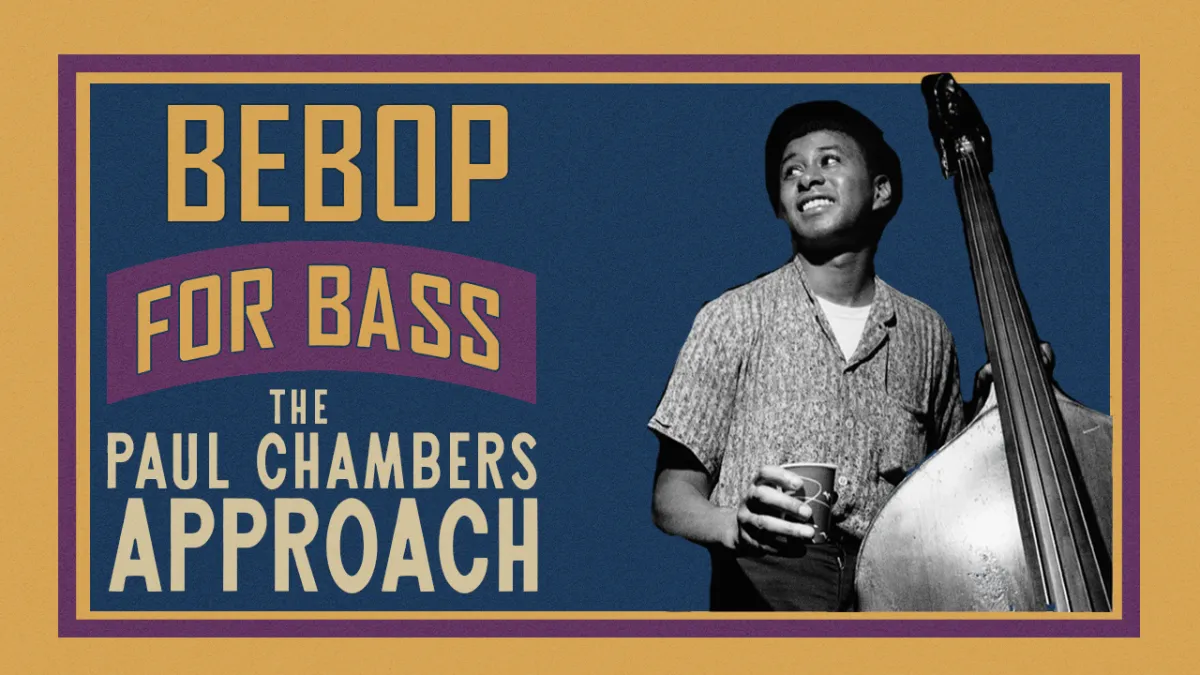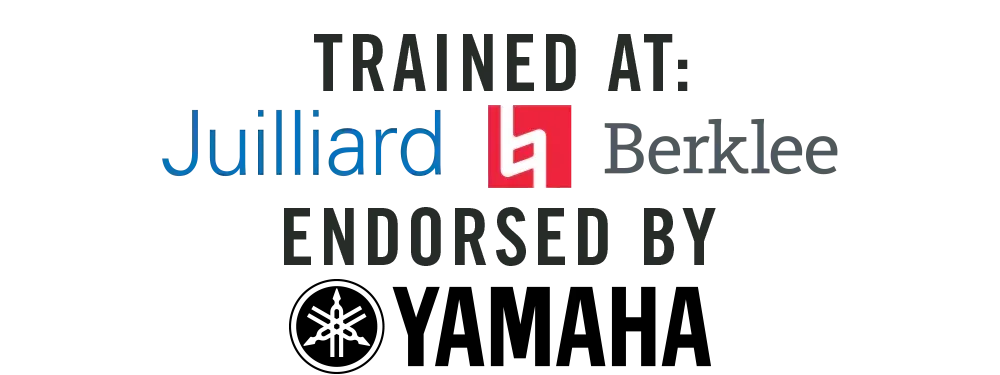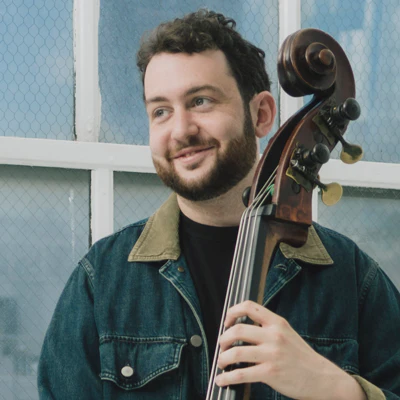How To Steal Chambers’ Dissonance Hack And Transform Every Wrong Note Into Groove, Feel, And Momentum That Pulls The Whole Room With You
Now you can use Paul's approach to build solos that actually sound like jazz—without memorizing hundreds of scales or patterns.

Value: $199 Today: $47
- Lifetime access — one-time payment
- Trusted by serious upright bassists worldwide
HD video lesson • Simple 6-step framework

Does This Sound Like You?
You’ve been playing long enough to know what good time feels like.
You can lock with any drummer, hold down a band, and walk through just about anything.
But when it’s your turn to solo… it still doesn’t sound how you want it to.
The groove slips.
The phrasing feels boxed in.
You hit all the right notes — but somehow it still doesn’t say anything.
If that’s you, you’re in good company.
Every serious bassist I know hits this wall at some point.
And it’s exactly why I built this lesson.
Introducing: Bebop for Bass -
The Paul Chambers Approach
A focused, lick-driven masterclass that breaks down the melodic, harmonic, and rhythmic DNA of Paul Chambers and shows you how to make it your own.
You’ll learn:
The “Wrong Notes” Concept — why tension is what makes your phrases sing
The 3-Part Rule of Melodic Storytelling — every great phrase has a beginning, direction, and end
How to Mutate Licks — turn Paul’s language into your own
Right vs. Wrong Notes Ratio (80/20 Rule) — the real formula of bebop lines
The “3–5–7–9 Shift” — how real soloists think differently from bass line players
Phrasing for Swing — how accenting the “and” creates that flying-forward feel
Each concept is tied to a real Paul Chambers line — broken down, explained, and demonstrated on upright.
In Bebop for Bass - The Paul Chambers Approach, You’ll Learn How To:
The “Wrong Notes” Concept — why tension is what makes your phrases sing
The 3-Part Rule of Melodic Storytelling — every great phrase has a beginning, direction, and end
How to Mutate Licks — turn Paul’s language into your own
Right vs. Wrong Notes Ratio (80/20 Rule) — the real formula of bebop lines
The “3–5–7–9 Shift” — how real soloists think differently from bass line players
Phrasing for Swing — how accenting the “and” creates that flying-forward feel
Why Most Bassists Never Sound Like Jazz
Because you were trained to fill space instead of use it.
Years of walking lines hardwire you to keep moving, every beat, every bar.
That’s what makes you a great bassist… and what’s been quietly killing your solos.
This course flips that script.
It retrains your sense of space, rhythm, and expression — so the moment you stop walking, the music keeps breathing
This Is For You If:
You can walk confidently but freeze up when it’s your turn to solo
You’ve tried learning bebop lines but they don’t stick
You’re tired of playing the same phrases and want to develop a personal voice
You want to bridge classical technique and real jazz language
Is There a Guarantee?
When you join my programs, you’re making a commitment — and so am I.
That’s why all enrollments are final.
No refunds or cancellations are provided once your payment is processed.
The lesson, PDF, and whatever else is included is unlocked immediately after purchase, giving you full access from day one.
I do this to protect the integrity of the course and the students who show up ready to work.
If you’re unsure, take your time before joining.
But once you’re in, you’re in.
What’s Inside
You’re getting a focused 2-hour video course and a concise PDF companion. Clean, practical, and built for upright bass.
HD Video Course
How to make your bass speak like a horn.
Learn how Paul Chambers turned Charlie Parker’s bebop ideas into phrases that actually swing on upright.The “wrong notes” trick that separates pros from amateurs.
Why hitting tension notes on purpose can make your solos sound instantly more musical.How to stop sounding “correct” and start sounding like jazz.
The rhythmic phrasing secret that gives your lines movement and soul.The 80/20 Rule of Jazz Soloing.
80% right notes. 20% “wrong” notes. 100% authentic bebop feel.Why Paul Chambers’ lines work (even when they shouldn’t).
Discover the hidden harmonic logic that makes his solos sing instead of stumble.The 3-part storytelling rule every great solo follows.
How to create phrases with a beginning, middle, and end — not just endless runs.How to mutate Paul’s licks into your own language.
Turn imitation into fluency with one simple transformation exercise.The rhythm trick that gives your playing “forward motion.”
You’ll never think of swing the same way again.How to think like a soloist — not a sideman.
The subtle mindset shift that changes how you hear, phrase, and build ideas.Bonus: The “Imaginary Five” concept.
The weird Paul Chambers move that makes your lines sound harmonically rich — even over static changes.
PDF Companion
A quick-reference guide that mirrors the course structure.
39 pages of complete notation for all 12 Paul Chambers licks — each one written out clearly and organized by tune.
Direct transcriptions of PC’s solos from classics like Confessin’, Blues by Five, Tadd’s Delight, You’d Be So Nice to Come Home To, Dexterity, and more.
Commentary after every lick explaining:
how the line functions harmonically (tension / release, enclosures, chromatic approach)
where to place half-steps and “wrong” notes for authentic bebop sound
how to transpose and practice each line in all 12 keys
Mini essays on “The Mindset Behind Studying Paul Chambers” and “Masters vs Amateurs”
Technical fingerings written beneath every bar for upright execution.
Example call-outs (“As played on Blues by Five,” etc.) showing the exact recording each lick came from.
Before dinner, you’ll learn the exact exercises I use to turn harmony into melody on upright bass.
Fill in your information and you'll get immediate lifetime access to the course.
Important: Make sure to provide your most used email address because that's where I'll send your login credentials.
If you don’t feel a difference — in how you play, how you hear, and how your solos feel — I’ll refund every penny.
What students are saying:
“For the first time I can actually hear where my solo should go. Cole made harmony make sense.”
— Dmitri A.
“The 3rds-and-7ths idea completely changed how I approach walking and soloing.”
— Natalie P.
“Short, direct, and so musical. Every upright player should watch this.”
— Gavin L.
Get Instant Access to 'The Essential Paul Chambers Course'

MEET your instructor
COLE DAVIS
Juilliard Master of Music
Yamaha Performing Artist
Cole Davis is an award-winning upright bassist and educator based in New York City. A graduate of Berklee College of Music, the Manhattan School of Music, and The Juilliard School, he became the youngest musician ever admitted concurrently to Juilliard’s Master of Music and Artist Diploma programs.
Cole has performed with artists like Macy Gray and Adrian Younge’s Jazz Is Dead ensemble, appeared at venues including Jazz at Lincoln Center and the Kennedy Center, and earned honors such as Winner of the Ron Carter Jazz Bass Competition, BMI Future Jazz Master, and Yamaha Young Performing Artist.
As the creator of The New Simandl and Freedom of Movement, Cole has helped thousands of bassists worldwide simplify technique and develop freedom on the instrument. His mission: make upright bass playing simple, musical, and deeply expressive.